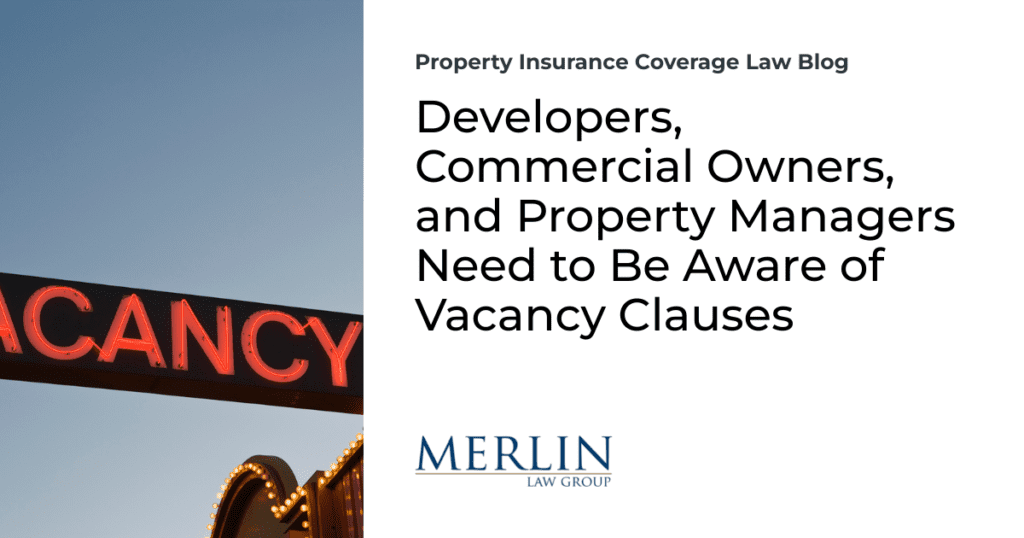Developers, Commercial Owners, and Property Managers Need to Be Aware of Vacancy Clauses

Economic downturns can cause an increase in vacancies, as I wrote about thirteen years ago in FC&S Warns Agents and Policyholders to Watch the Vacancy Exclusionary Clause. A lot of other reasons cause commercial buildings to become vacant and may adversely impact the amount of available insurance coverage if the building sustains a loss during that vacancy.
Law360 – Insurance Authority published an insurer’s motion for summary judgment in a Mississippi vacancy case.1 This should be a reminder to commercial insurance agents, property owners, developers, and property managers. The insurance company claims that coverage was properly denied because:
[T]he policy only ‘cover[s] direct physical loss caused by a covered peril to an ‘existing building’ while in the course of rehabilitation or renovation. There is no question that the fire did not occur while Sinjel’s building was ‘in the course of rehabilitation or renovation.’ According to Sinjel, no one even entered the building during 2020. Second, the policy ‘only cover[s] a vacant ‘existing building’ for 60 consecutive days from the inception date of this policy unless building permits have been obtained and rehabilitation or renovation work has begun on the ‘existing building’.’ The Plaintiff had done neither. It is undisputed that the Plaintiff had not obtained building permits or commenced rehabilitation or renovation work on the building in the 60-day period following the inception of the policy. Therefore, there is no coverage for the fire under the terms and provisions of Ohio’s policy, and Sinjel’s claim was properly denied.2
The problem for insurance agents, property owners, developers, and property managers is that many buildings have to be fully insured per lease, loan, or investment covenants, regardless of whether the buildings are vacant. When there are these covenants, coverage should be bought with a vacant building limitation waiver or endorsement. Delays in construction and permitting occur all the time. Buildings’ usage and occupancy change all the time and sometimes without management’s knowledge.
The point of this post is that when a commercial building becomes vacant, insurance coverage is at issue. However, insurance coverage issues are not usually considered at those times because the problem causing the vacancy is usually on the minds of those involved with operating the building.
Thought For The Day
When a team takes ownership of its problems, the problem gets solved. It is true on the battlefield, it is true in business, and it is true in life.
—Jocko Willink
1 Alexa Scherzinger, No Fire Coverage For Vacant Building, Insurer Tells Court, Law360 – Insurance Authority, June 2, 2023. Available online (subscription): https://www.law360.com/insurance-authority/articles/1683905/no-fire-coverage-for-vacant-building-insurer-tells-court
2 Sinjel v. Ohio Cas. Ins. Co., No 3:22-cv-419 (S.D. Miss. June 1, 2023).



